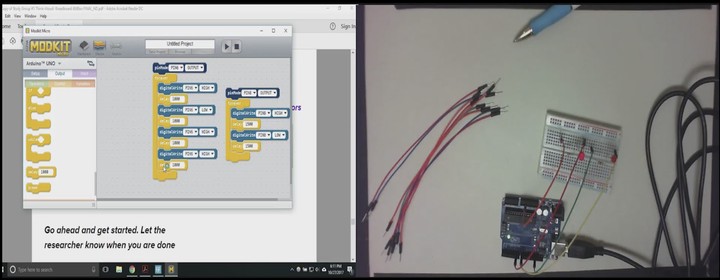Circuit Diagrams Vs. Physical Circuits: The Effect of Representational Forms During Assessment Kayla

Abstract
Assessment of students’ conceptual knowledge is a difficult task in all fields including electrical engineering. Recently, electrical engineering assessments have tried to isolate various types of knowledge through expert reviewed and validated tests or concept inventories, which attempt to cover the foundational concepts within a particular domain. While these tests have been fundamental in uncovering how students understand important concepts within specialties, they are traditionally administered on a static 2D interface without providing the students with tangible examples to think with or about. We report on a qualitative laboratory study to understand how different tools can change the possibilities and limitations of thinking with circuits. Specifically, we administer two versions of an assessment targeting concepts in direct current (DC) circuits in which students talked through their reasoning. One version represents the circuits as conventional symbolic diagrams, and the other version represents the circuits using physical circuit components connected with wires and solder. The participants conveyed several misconceptions within both forms with an even spread across each assessment. However, students exhibited the misconception of sequential reasoning more prevalently in the physical circuit assessment than the diagram assessment.